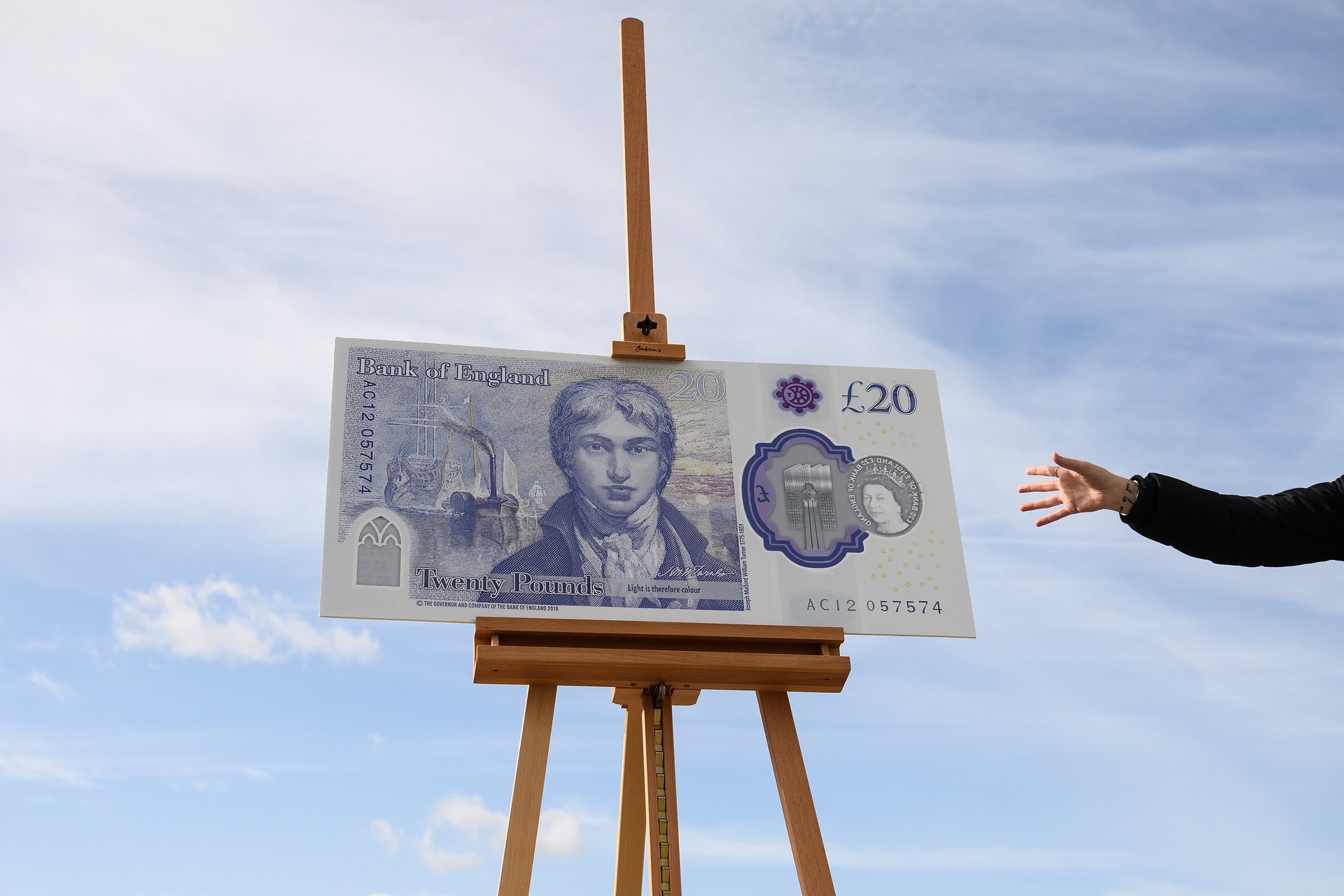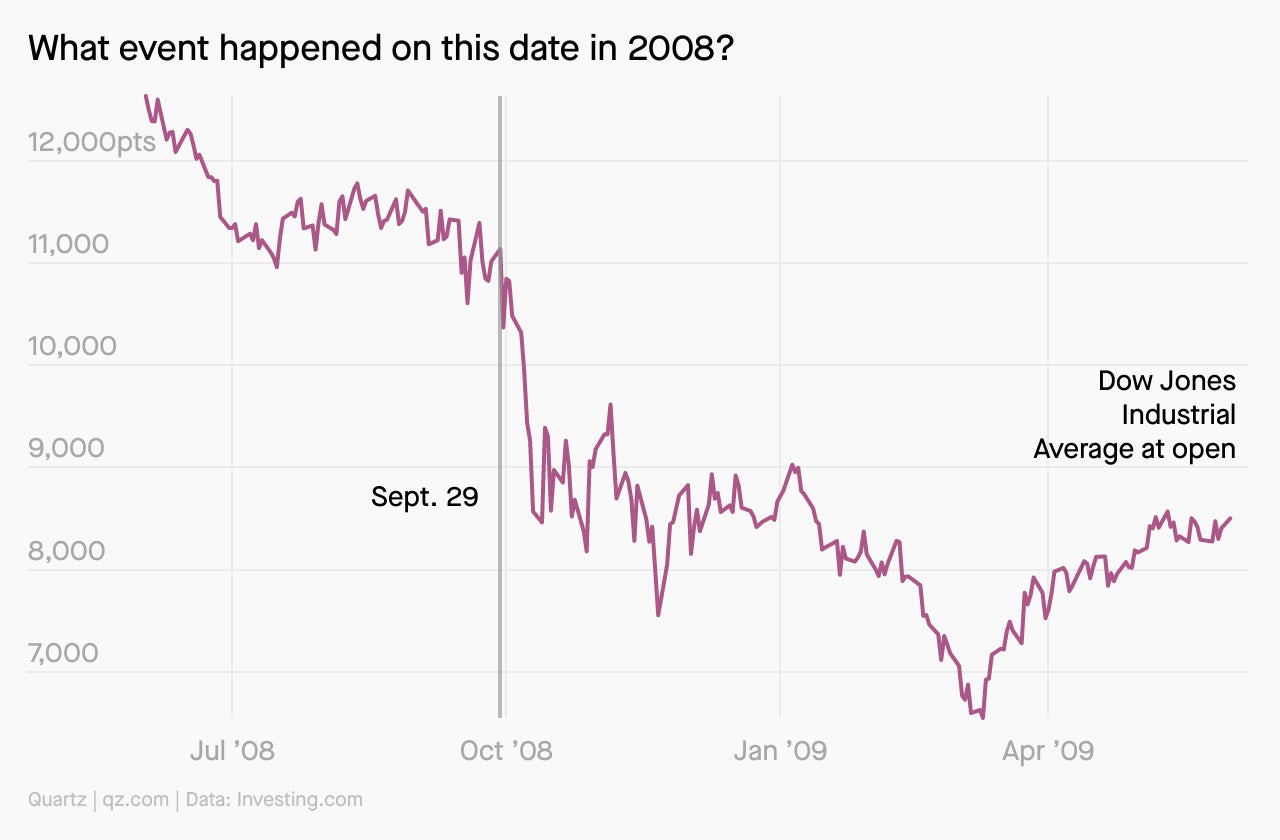Adam Smith’s invisible hand: A mishandled metaphor
Forces unseen, and maybe never meant to be

Forces unseen
Suggested Reading
18th century Scottish moral philosopher Adam Smith probably did not expect to become known as the father of capitalism, but he almost certainly never foresaw that his usage of one phrase would serve as something akin to holy law for proponents of laissez faire economics.
Related Content
Smith did write the phrase “invisible hand” three times in his works, but each usage is different and none are framed as a prescription for economic policy. To date, there is no consensus on what Smith meant by it. Some have hailed the metaphor (pdf) as “one of the greatest ideas in history,” and others have deemed it no more than a “rhetorical device” or “an ironic joke.”
When understood within the context of Smith’s arguments, and the broader scope of his thought, it becomes clear why “invisible hand” can take on an ambiguous, if not contradictory, meaning. So how did a passing reference Smith made thrice in his writing come to symbolize an ideology the philosopher would likely disagree with? And when did “invisible hand” get the appendage “of the market”?
Look! Some visible facts!

Selected works
Adam Smith (1723-1790) was a leading figure in the Scottish Enlightenment, an 18th century intellectual and cultural movement that marked a shift away from established religious thought and towards humanism and rationalism.
Smith’s most famous works are:
📗 The Theory of Moral Sentiments (1759)
A laying out of Smith’s moral philosophy. He argues that while humans can be selfish (a belief held by his peers Bernard Mandeville and Thomas Hobbes), they also have the capacity for sympathy, or the ability to care about others, a trait he sees as innately human. Smith argues humans can make moral judgements, and develop social unity, because we can sympathize.
📙 An Inquiry into the Nature and Causes of the Wealth of Nations (1776), often shortened to The Wealth of Nations
In The Wealth of Nations, Smith argues for an alternative, free market system. He proposes that seeking personal benefit and serving the public good are not mutually exclusive, and insists that the natural forces of a free market, guided by individuals making self-interested economic decisions, will lead to the greatest enrichment and benefit of society as a whole.
Quotable
“As every individual, therefore, endeavors as much as he can both to employ his capital in the support of domestic industry, and so to direct that industry that its produce may be of the greatest value; every individual necessarily labors to render the annual revenue of the society as great as he can. He generally, indeed, neither intends to promote the public interest, nor knows how much he is promoting it. By preferring the support of domestic to that of foreign industry, he intends only his own security; and by directing that industry in such a manner as its produce maybe the greatest value, he intends only his own gain, and he is in this, as in many other cases, led by an invisible hand to promote an end which was no part of his intention.”
— Adam Smith, making his one “invisible hand” reference in The Wealth of Nations (bold and emphasis in the quote added). In a chapter about international commerce, Smith makes an argument for free trade and against mercantilist protectionism. He says that removing import restrictions will not harm a nation’s economy, because merchants will naturally prefer to invest at home rather than abroad.
Chartable

Send us your best guess as to what act of the invisible hand sent things plummeting. We’ll tell you what the chart depicts before everyone else finds out in the next Obsession.
Brief history of “invisible hand” interpretations
1752: Smith becomes the chair of moral philosophy at the University of Glasgow.
1759: The Theory of Moral Sentiments is published, where the metaphor “invisible hand” appears in an observation that the rich unintentionally help the poor obtain the “necessaries of life.”
1776: The Wealth of Nations is published, with “invisible hand” appearing in a passage arguing against British trade protectionism.
1795: Smith’s Essays on Philosophical Subjects is posthumously published and mentions “invisible hand” in a lecture he delivered at Glasgow University during his tenure, likely before 1758, on the topic of how early humans perceived natural phenomena.
1944: Friedrich Hayek, Austrian-British economist and philosopher, publishes The Road to Serfdom (pdf), a foundational text for classical liberalism—i.e. laissez faire economics. His economic theory, which draws upon Smith’s “invisible hand,” and the ideas of other Scottish Enlightenment thinkers, champions individual freedom and warns that central planning leads to totalitarianism. “Invisible hand” also inspires his later writing on markets as being a product of “spontaneous order,” which he argues is best left unregulated.
1948: Economists William Nordhaus and Paul Samuelson, future winners of the Nobel prize, publish the first edition of Economics. It contains an edited quote of Smith’s “invisible hand” passage from The Wealth of Nations. Economics, which eventually sells millions of copies and is translated into over 40 languages, becomes an authoritative textbook on the subject.
1977: Nobel prize-winning “Chicago school” economist Milton Friedman describes Smith’s “invisible hand” as “the way in which voluntary acts of millions of individuals each pursuing his own objectives could be coordinated, without central direction, through a price system.”
1980: Friedman publishes his book Free to Choose, which argues against government intervention, and describes “invisible hand” once more as meaning “No external force, no coercion, no violation of freedom is necessary to produce cooperation among individuals all of whom can benefit.” A show called “Free to Choose” begins running the same year on US public television.
1994: Harvard economic historian Emma Rothschild argues that all three of Smith’s references to “invisible hand” are “ironical” and that its meaning not only contradicts other parts of his work, but would have been an unsavory idea to him.
1998: Political economy researcher at Harvard Business School, Jonathan Schlefer, says in The Atlantic that “invisible hand” is “today’s most mischievous misquotation.” He attributes the misunderstanding, in part, to the “invisible hand” quote found in the aforementioned textbook, Economics, which he sees as edited in a decontextualized and misleading way.
2008: Harvard economist Stephen Marglin argues in The Dismal Science that “invisible hand” is an “incomplete” idea and the “most misunderstood” phrase in Smith’s work.
2011: Republican US presidential candidate Mitt Romney says on the campaign trail: “The invisible hand of the market always moves faster and better than the heavy hand of government,” encapsulating a contemporary understanding of the term.
2017: In an extra scene from the documentary American Feud: A History of Conservatives & Liberals, Noam Chomsky, professor of linguistics emeritus at the Massachusetts Institute of Technology, asserts that Smith’s “invisible hand” has nothing to do with endorsing the free movement of capital, but is actually cited as assurance that there is natural protection against it.
Fun fact!
One of the earliest mentions (pdf) of an “invisible hand” can be found (depending on translation) in Ovid’s Metamorphoses (8 AD)—a book Adam Smith had in his library. The Loeb edition, translated by Frank Justus Miller, reads: “There in his vitals twisted and plied his invisible hand [Caecamque in viscera movit versavitque manum vulnusque in vulnere fecit]” when referring to the unfortunate gutting of a centaur.

Pop quiz
Who has not made an invisible hand reference?
A. George Carlin
B. A 12th century monk
C. SpongeBob SquarePants
D. Shakespeare
The correct answer is visible at the bottom.
Take me down this 🐰 hole!
Although Smith believed in the allocative power of a free market, he was not the free enterprise fanatic he’s often cracked up to be, nor did he think the market was wholly self-regulating. In fact, he was critical of capital owners, and in favor of public works and financial regulation. The following ideas from The Wealth of Nations can be interpreted as contradicting the contemporary, free market usage of “invisible hand.”
🤑 On capital owners. Smith voices his distrust towards merchants and manufacturers, or capital owners, on several occasions. In one chapter, Smith writes about “those who live by profit,” or what he terms the “third order” in society (the first and second orders being landlords and workers). He says the third order’s “interest is never exactly the same with that of the public,” and that it has a tendency to “deceive and even to oppress the public.” He further cautions against adopting “any new law or regulation of commerce which comes from this order” without careful consideration.
🏛️ On public institutions. Smith says that the state should provide goods and services, citing roads and education as examples, for the benefit of the public. He asserts that a sovereign has “the duty of erecting and maintaining certain public works and certain public institutions, which it can never be for the interest of any individual, or small number of individuals, to erect and maintain; because the profit could never repay the expense to any individual or small number of individuals, though it may frequently do much more than repay it to a great society.”
🖋️ On financial regulation. Smith endorses the need for financial regulation, and also expresses his concern towards the monopolistic tendencies of merchants and manufacturers. In a passage endorsing banking regulation, he says “those exertions of the natural liberty of a few individuals, which might endanger the security of the whole society, are, and ought to be, restrained by the laws of all governments.” He goes on to compare the implementation of a banking regulation to fire codes, or in his words, building walls to prevent “communication of fire.”

Poll
What are your thoughts on Adam Smith’s “invisible hand” after reading this?
- Invisible hand?? In this economy?!!!
- If only the invisible hand could help clean my house
- I have a visible headache
💬 Let’s talk!
In last week’s poll about Spam, only 1% of you confessed to eating the canned American export daily, and 63% wouldn’t touch it at all. Our Twitter and LinkedIn followers were even more adamant about keeping Spam in the can, with between 74% and 80% saying no thank you. Maybe it’s time to branch out!
Today’s email was written by Julia Malleck (possesses visible hands) and edited by Susan Howson (has only seen Julia’s hands through videoconferencing, so cannot truly confirm). The text-to-image AI generator DALL-E 2 was our invisible hand through some of our image sourcing.
The correct answer is C., SpongeBob SquarePants. But the show does have the invisible boatmobile. George Carlin has a snarky joke about the “invisible hand,” 12th century Benedictine monk Petrus Cellensis made a reference to it in his writing, and Shakespeare’s Macbeth invokes it in a line from act 3, scene 2 of the eponymous play.